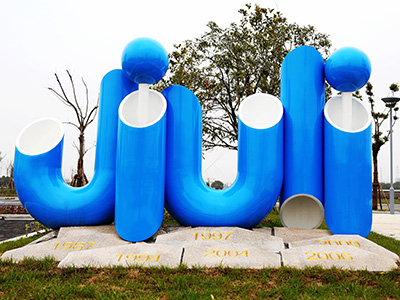(1)1Cr17Ni(301)and 00Cr17Ni7N(301L)
All are metastable austenitic stainless steels. That is, the solid solution state is austenite, but after cold processing, according to the amount of cold deformation, some or most of the austenite will be changed into martensite, so that the strength and hardness of the steel is significantly improved (see Figure 1, Figure 2, Figure 3), but there is still enough molding. Decarburized and nitrogen-added 00Cr17Ni7N, replacing carbon with nitrogen, retains the characteristics of 1Cr17Ni7, and improves the corrosion resistance and weldability of steel. These two types of 17-7 stainless steels are mainly used to manufacture structures that can withstand high loads in the cold working state to reduce the weight of equipment and to avoid rust and corrosion in the atmosphere.
Fig. 1. Room temperature mechanical properties of cold-deformed 1Cr17Ni7 steel

Figure 2.1 Cold work hardening characteristics of Cr17Ni7 steel

Fig. 3. Effect of deformation temperature on mechanical properties of 1Cr17Ni7 stainless steel at room temperature and production quantity of α-martensite
(2)1Cr18Ni9(302),1Cr18Ni12(305),0Cr18Ni9Cu3 and Y1Cr18Ni9,Y1Cr18Ni9Se
1Cr18Ni9 is 18-8 the oldest grade of stainless steel. Corrosion resistance, cold forming performance is similar to 0Cr19Ni9, because of the high carbon content of this steel, generally no δ-ferrite and austenite stability, therefore, this steel is more suitable for low temperature and magnetic and other applications.
1Cr18Ni2 and 0Cr18Ni9Cu3, the former is by improving the nickel content of 1Cr18Ni9 steel, so that the austenite is more stable, after a large cold deformation, can basically not produce martensitic transformation, both can make the steel cold work hardening tendency is small, more easy to cold work forming, reduce the number of intermediate annealing. At the same time, compared with 0Cr18Ni9 (304), it is more suitable for non-magnetic use due to the small change of magnetic permeability between the solid solution state and the rolled state (Fig. 4). While 0 cr18ni9cu3 join copper makes austenite more stable, the sensitivity of the cold working process into martensite is reduced, so that the rate of cold work hardening tendency and cold as steel and cold cracking sensitivity to drop, make the steel under the small deformation force can get the biggest cold deformation, therefore, 0 cr18ni9cu3 more suitable for fasteners and deep drawing, deep drawing and other USES. Figures 5 and 6 show some test results.

Fig. 4.1 Comparison of permeability between Cr18Ni12 (305) and 0Cr18Ni9

Fig. Influence of 5.3%Cu on reducing cold working strengthening of 0Cr18Ni9 stainless steel

Fig. 6.0 Cracking tendency of cold working of 0Cr18Ni9S(303), 0Cr18Ni9 (304) and 0Cr18Ni9Cu3(18-9-3) steels
Y1Cr18Ni9 is by adjusting the content of P (≤0.20%) and S (≥0.15%) in the steel, and Y1Cr18Ni9Se is by adjusting the P (≤0.20%) and S (≥0.60%) in the 1Cr18Ni9 steel and adding Se (≥0.15%), so that the steel has excellent cold cutting machinability. (From Introduction to Stainless Steel)


















